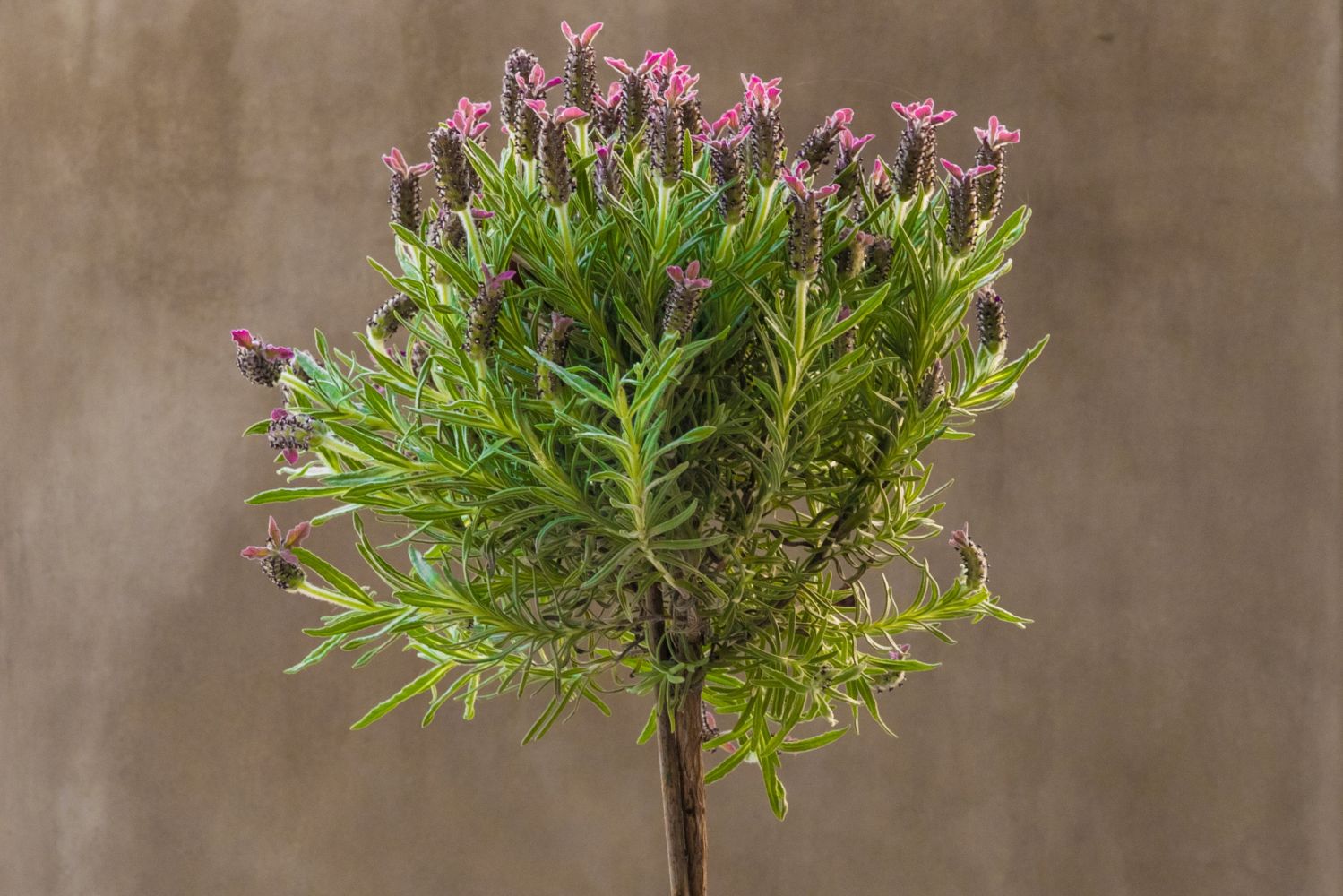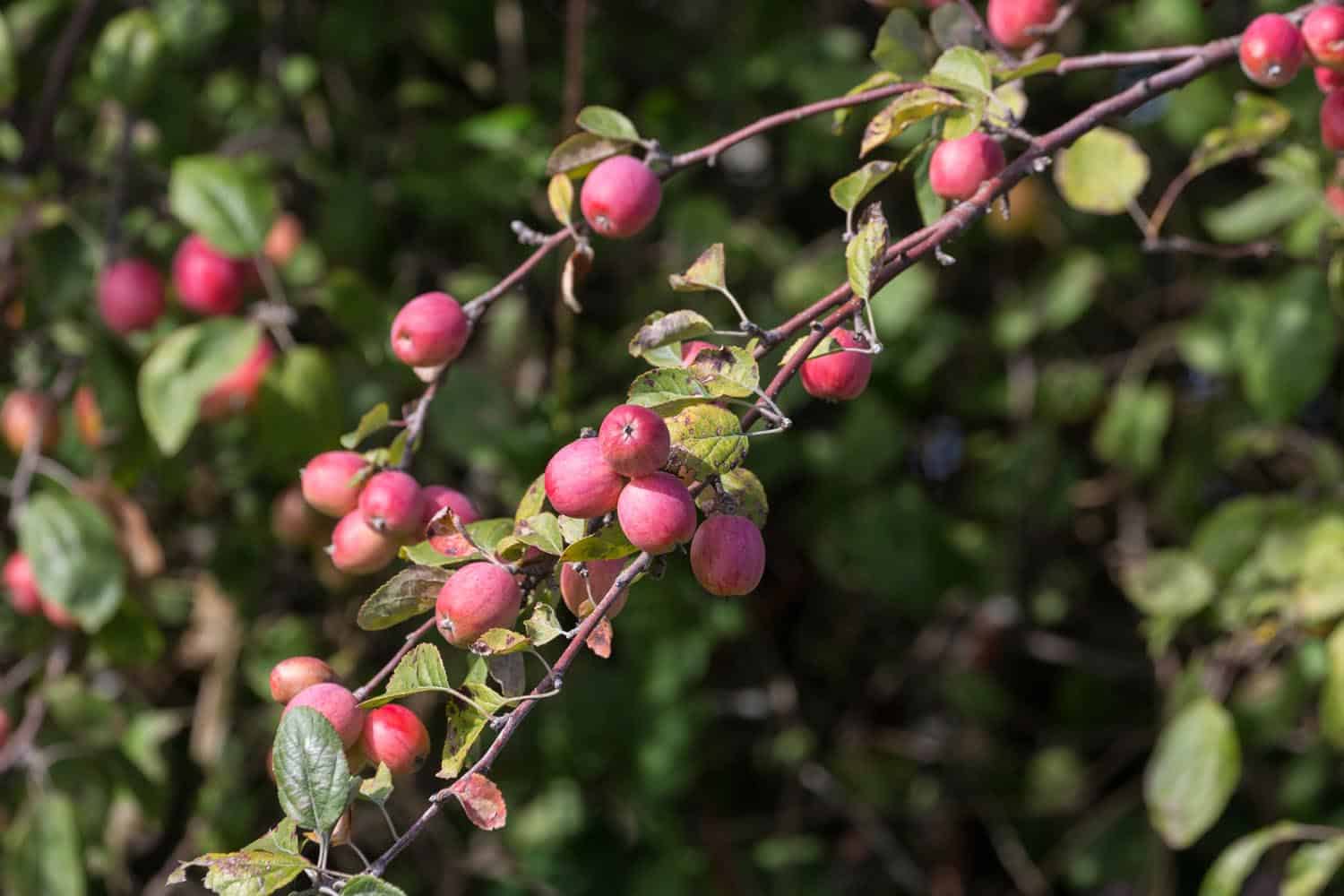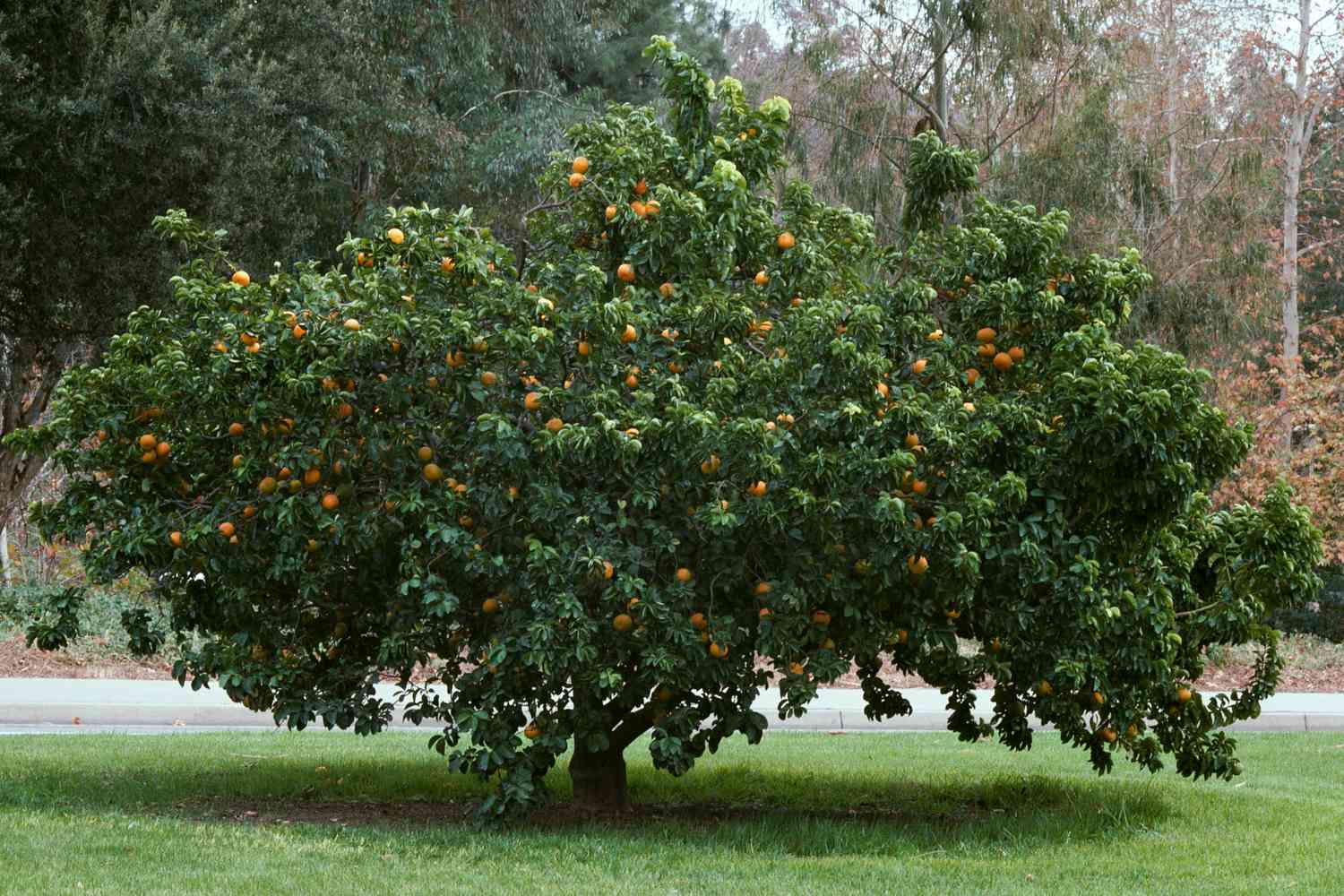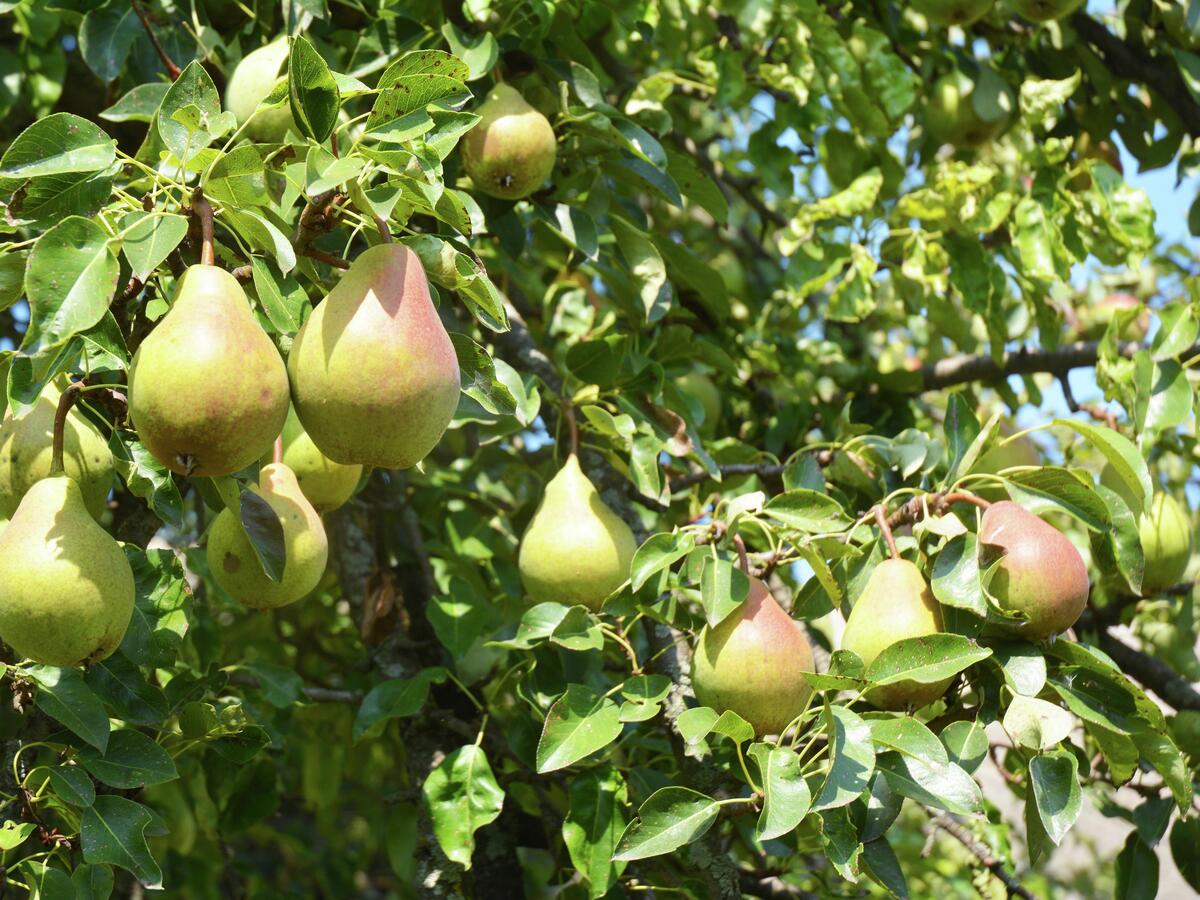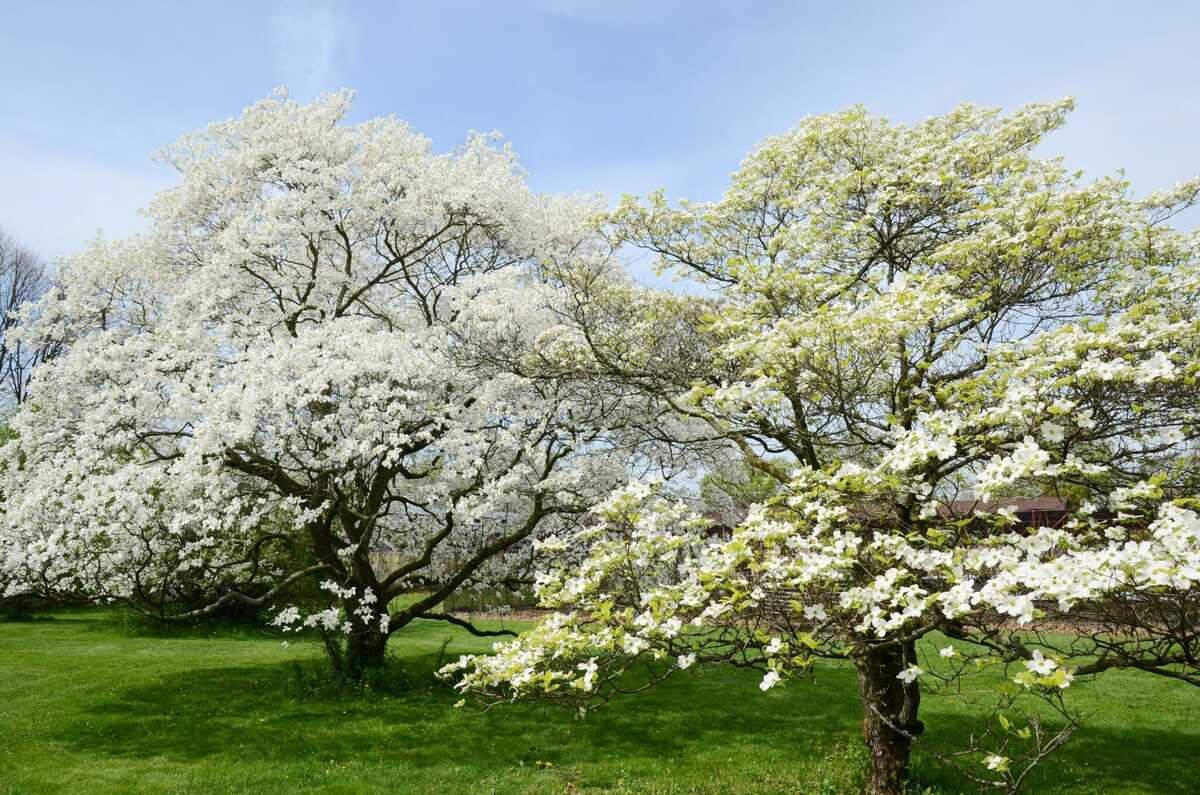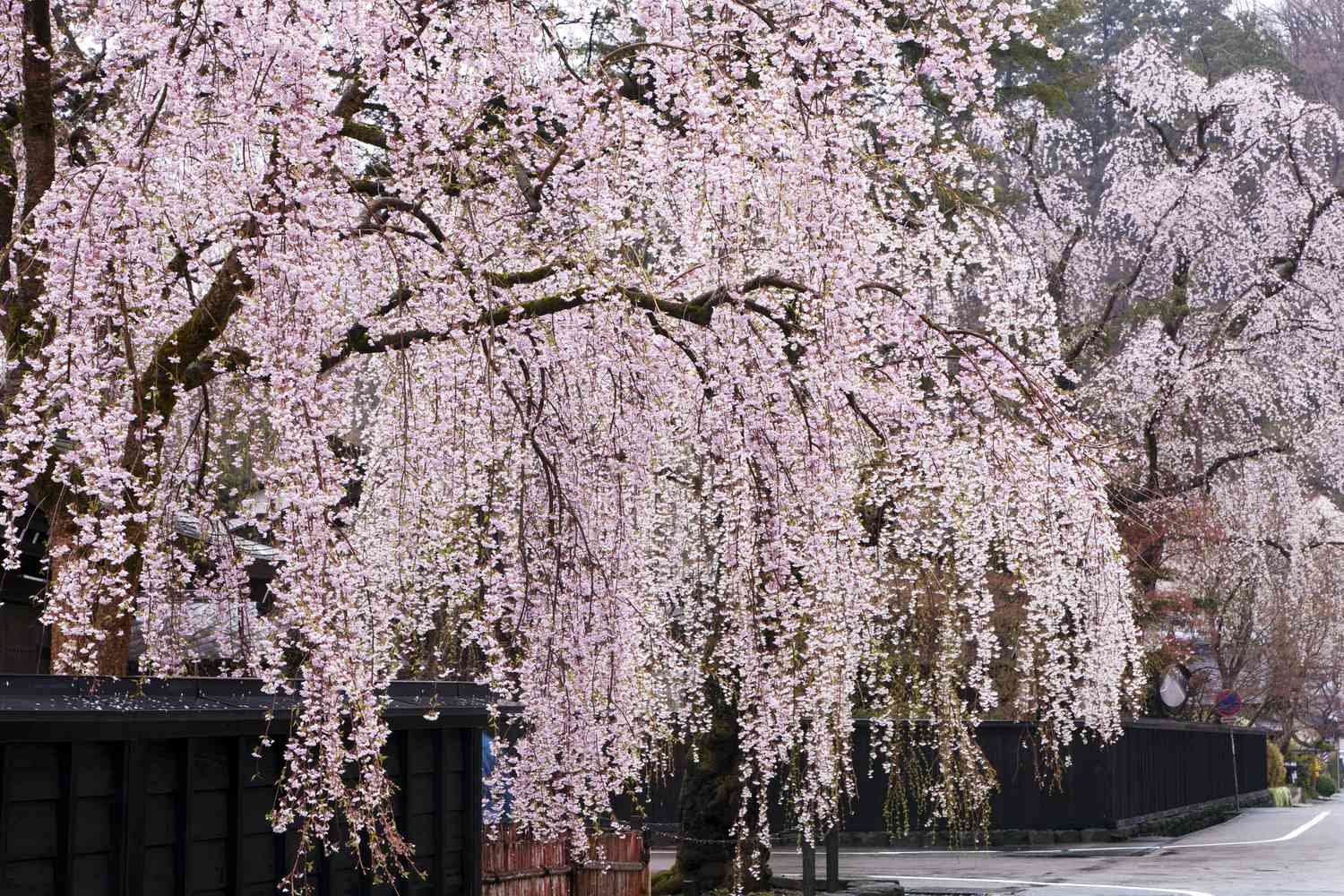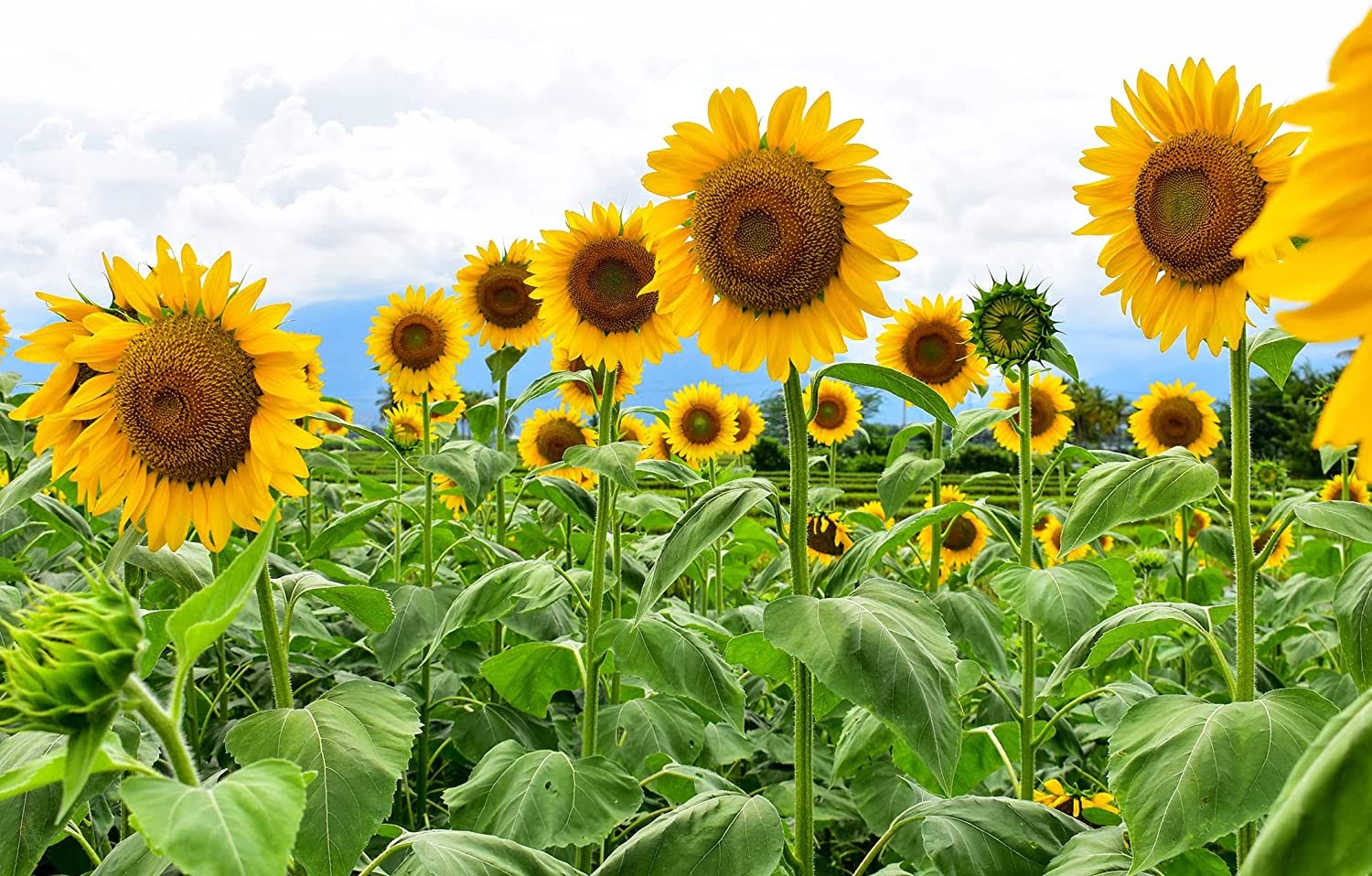Home>Gardening Techniques>Plant Care>How Big Do Hibiscus Trees Get
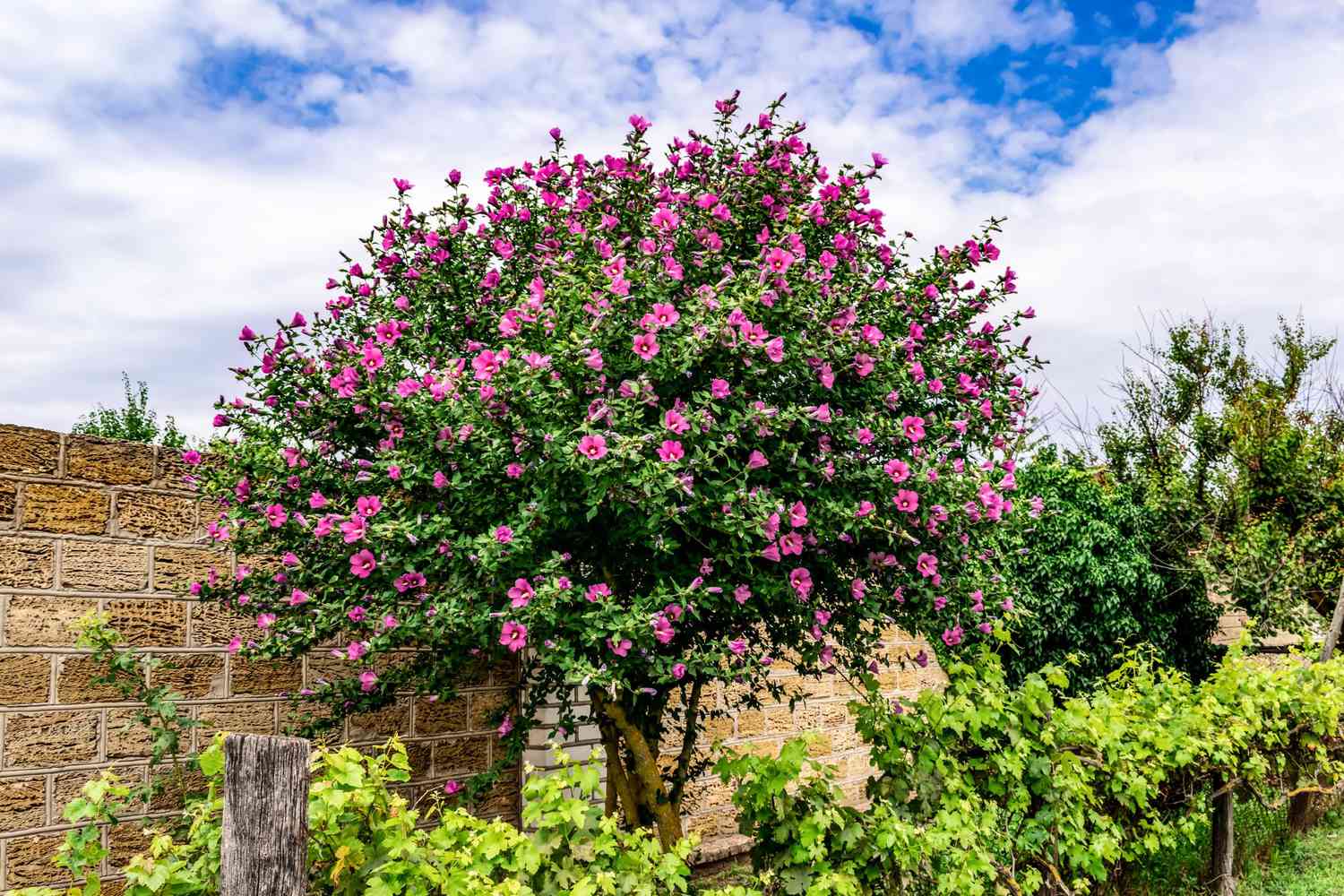

Plant Care
How Big Do Hibiscus Trees Get
Published: November 6, 2023
Discover the ideal plant care for hibiscus trees and learn about their growth potential. Find out how big hibiscus trees can get and tips for cultivating them.
(Many of the links in this article redirect to a specific reviewed product. Your purchase of these products through affiliate links helps to generate commission for Chicagolandgardening.com, at no extra cost. Learn more)
Table of Contents
Introduction
Welcome to the fascinating world of hibiscus trees! Whether you are a seasoned gardener or just starting your plant care journey, understanding the size and growth habits of hibiscus trees is crucial. These beautiful plants, known for their vibrant flowers and lush foliage, can add a touch of tropical beauty to any garden or landscape.
As you embark on your hibiscus tree care adventure, it’s important to have a clear understanding of how big these trees can get. Knowing their potential size will help you plan their placement in your garden and ensure they have enough space to thrive.
In this article, we will explore the various factors that can affect the size of hibiscus trees. We will delve into the ideal growing conditions necessary for them to reach their full potential. Additionally, we will discuss the different hibiscus tree varieties and their average sizes, as well as provide tips on pruning and maintenance to help you control their growth.
So, if you’re ready to dive into the world of hibiscus trees and learn all about their size and care requirements, let’s get started!
Understanding Hibiscus Trees
Hibiscus trees, scientifically known as Hibiscus rosa-sinensis, are tropical plants characterized by their large, showy flowers. These trees belong to the Malvaceae family and are native to warm regions around the world. They can reach impressive heights and widths, depending on the variety and growing conditions.
One of the key features of hibiscus trees is their ability to produce an abundance of colorful flowers. These flowers typically have trumpet-shaped petals and come in a wide range of vibrant hues, including red, pink, orange, yellow, and white. They add an eye-catching display of beauty to any garden.
Aside from their stunning flowers, hibiscus trees also have glossy and attractive foliage. The leaves are usually deep green and have a shiny texture, making them a visually appealing addition to any landscape.
Hibiscus trees are considered deciduous, meaning they shed their leaves during the winter months in colder climates. However, in warmer regions, where the temperature remains mild throughout the year, they can retain their foliage all year round.
When it comes to growth habit, hibiscus trees can vary. Some varieties tend to have a more upright and columnar shape, growing tall and slender. Other varieties have a bushier habit, spreading out and creating a fuller appearance. The specific growth habit of a hibiscus tree will depend on its genetic makeup and environmental factors.
Understanding the growth habit of hibiscus trees is essential for proper placement in your garden. Consider the available space, including the height and spread of the tree, to ensure it has enough room to grow and flourish without overcrowding other plants or structures in your landscape.
Now that we have laid the foundation for understanding hibiscus trees, let’s explore the factors that can affect their size in the following sections.
Factors Affecting the Size of Hibiscus Trees
Several factors can influence the size and growth of hibiscus trees. Understanding these factors will help you determine how big your hibiscus tree can potentially become and how to best care for it.
1. Variety: Different hibiscus tree varieties naturally have varying growth habits and sizes. Some varieties are known for their compact and bushy growth, while others can grow tall and have a more upright form. It’s essential to research the specific variety you have or intend to plant to understand its growth characteristics.
2. Environmental Conditions: The environment in which a hibiscus tree grows plays a significant role in its size. Factors such as climate, temperature, humidity, and sunlight exposure can impact its growth rate. Hibiscus trees thrive in tropical and subtropical regions with warm temperatures and high humidity. In cooler climates, they may grow at a slower pace and be smaller in size.
3. Soil Quality: The quality and composition of the soil can affect the growth and overall health of hibiscus trees. They prefer well-draining soil that is slightly acidic with a pH level between 6.0 and 6.5. Rich, fertile soil that is amended with organic matter helps promote healthy root development and robust growth.
4. Watering: Proper watering is crucial for hibiscus tree growth. These plants require regular watering, especially during dry or hot periods. Inadequate watering can stunt growth, while overwatering can lead to root rot and other issues. Finding the right balance and ensuring consistent moisture is vital for optimal growth.
5. Fertilization: Providing appropriate nutrients through fertilization is essential for the size and health of hibiscus trees. Applying a balanced, slow-release fertilizer formulated for flowering plants will promote vigorous growth and abundant blooms. Be sure to follow the instructions on the fertilizer package for proper dosage and timing.
6. Pruning: Pruning hibiscus trees can help control their size and shape. Regular pruning, done during the dormant period or after flowering, can promote bushier growth and prevent the tree from becoming too leggy. It also removes any dead or diseased branches, improving overall plant health.
By considering these factors and providing optimal growing conditions, you can help your hibiscus tree reach its maximum size and thrive in your garden or landscape.
Ideal Growing Conditions for Hibiscus Trees
Creating the ideal growing conditions for hibiscus trees is essential for their health, size, and overall performance. By providing the right environment, you can ensure that your hibiscus tree thrives and reaches its full potential.
1. Sunlight: Hibiscus trees love sunlight and require at least 6 to 8 hours of direct sunlight each day. Planting them in a spot with full sun exposure will help stimulate healthy growth and abundant flowering. However, in extremely hot and arid climates, some afternoon shade can be beneficial to prevent sunburn.
2. Temperature: Hibiscus trees thrive in warm temperatures and are sensitive to frost. They prefer a minimum temperature of 60°F (15°C). If you live in a colder region, consider planting your hibiscus tree in a container so you can bring it indoors during the winter months.
3. Humidity: Hibiscus trees thrive in high humidity environments. If you live in a dry climate, you can increase the humidity around the tree by misting it regularly with water or placing a tray filled with water near the plant to create a humid microclimate.
4. Soil: Hibiscus trees prefer well-draining soil that is slightly acidic with a pH level between 6.0 and 6.5. Amending the soil with organic matter, such as compost or peat moss, helps improve drainage and enriches the soil with nutrients.
5. Watering: Consistent and adequate watering is crucial for hibiscus trees. They prefer evenly moist soil and require regular watering, especially during hot and dry periods. Be careful not to overwater, as waterlogged soil can lead to root rot. Mulching around the base of the tree can help retain moisture and regulate soil temperature.
6. Fertilization: Hibiscus trees benefit from regular fertilization to support their growth and blooming. Use a balanced, slow-release fertilizer specifically formulated for flowering plants. Apply the fertilizer according to the package instructions, typically every 6 to 8 weeks during the growing season.
7. Air Circulation: Good air circulation is important for the overall health of hibiscus trees. Plant them with enough space between other plants to allow for adequate airflow, which helps prevent the development of fungal diseases.
By providing the ideal growing conditions of ample sunlight, warm temperatures, high humidity, well-draining soil, consistent watering, proper fertilization, and good air circulation, you can ensure your hibiscus tree thrives and reaches its maximum size and beauty.
Common Hibiscus Tree Varieties and Their Average Sizes
There are several hibiscus tree varieties, each with its own unique characteristics and average size. Let’s explore some of the most common hibiscus tree varieties and their typical sizes:
- Hibiscus rosa-sinensis: This is the most widely known variety of hibiscus tree. It can reach a height of 6 to 15 feet (1.8 to 4.5 meters) and spread about 3 to 10 feet (0.9 to 3 meters) wide. With its large, showy flowers and glossy leaves, it adds a beautiful tropical touch to any garden.
- Hibiscus syriacus: Also known as the Rose of Sharon, this variety is a deciduous shrub that can grow into a small tree reaching heights of 8 to 12 feet (2.4 to 3.7 meters) and widths of 6 to 10 feet (1.8 to 3 meters). It produces lovely flowers in shades of pink, white, and purple.
- Hibiscus coccineus: Commonly known as the Texas Star or Scarlet Rose Mallow, this variety can reach heights of 6 to 8 feet (1.8 to 2.4 meters) and spreads about 3 to 4 feet (0.9 to 1.2 meters) wide. The standout feature of this variety is its striking red flowers with prominent stamens.
- Hibiscus mutabilis: Also called the Confederate Rose, this variety can reach heights of 8 to 15 feet (2.4 to 4.5 meters) and spreads about 6 to 10 feet (1.8 to 3 meters) wide. It is known for its unique flowers that change color throughout the day, ranging from white in the morning to pink in the afternoon and deep red in the evening.
- Hibiscus cannabinus: Commonly known as Kenaf, this variety is a tall annual shrub that can grow up to 10 to 15 feet (3 to 4.5 meters) in height. It is primarily cultivated for its fiber and has limited ornamental value compared to other hibiscus varieties.
It’s important to note that these sizes are averages, and individual plants may vary in their growth habits. Additionally, with proper care and favorable growing conditions, hibiscus trees have the potential to exceed their average sizes and become even more impressive.
Now that you have a better understanding of some common hibiscus tree varieties and their average sizes, you can select the one that suits your garden space and desired aesthetics.
Pruning and Maintenance of Hibiscus Trees
Proper pruning and maintenance play a crucial role in the health and appearance of hibiscus trees. Regular pruning helps control their size, shape, and promotes vigorous growth. Here are some essential tips for pruning and maintaining hibiscus trees:
- Timing: It is best to prune hibiscus trees during their dormant period or right after they finish flowering. Pruning during this time allows the tree to focus its energy on new growth and blooms.
- Remove Dead or Diseased Branches: Start by inspecting the tree for any dead or diseased branches. Trim them back to healthy wood using clean and sterilized pruning tools. Removing these branches helps prevent the spread of diseases and improves overall plant health.
- Encourage Bushier Growth: To encourage a bushier growth habit, prune the tips of branches or pinch them back. This will stimulate lateral branching and result in a fuller and more compact tree.
- Control Height: If your hibiscus tree is getting too tall or outgrowing its space, you can prune it back by cutting the central leader or main stem. This will help control its height and promote a more compact form.
- Remove Crossing or Rubbing Branches: Look for branches that are crossing or rubbing against each other. These branches can create wounds and damage the tree’s overall structure. Trim one of the overlapping branches to eliminate the issue.
- Regularly Remove Spent Flowers: Deadhead or remove spent flowers regularly to promote continuous blooming. This process redirects energy and resources to new growth and encourages the production of more blooms.
- Maintain Good Hygiene: Keep the area around the hibiscus tree clean and free from fallen leaves, debris, and weeds. This reduces the risk of pests and diseases and ensures proper airflow around the tree.
Remember to always use clean and sterilized pruning tools to prevent the spread of diseases. Clean the tools with a disinfectant solution or rubbing alcohol before and after each use.
By following these pruning and maintenance practices, you can keep your hibiscus tree in optimal condition, promote healthy growth, and maintain its desired size and shape.
Tips for Controlling the Size of Hibiscus Trees
Controlling the size of hibiscus trees is important, especially if you have limited space or want to maintain a specific shape or height. Here are some helpful tips for managing the size of your hibiscus tree:
- Prune Regularly: Regular pruning is crucial for controlling the size of hibiscus trees. Trim back overgrown branches and remove any excessive growth to maintain the desired shape and size. Pruning should be done during the dormant period or right after flowering.
- Pinch Back New Growth: Encourage a more compact shape by pinching back new growth. This helps promote branching and prevents the tree from becoming leggy. Pinch back the tips of new shoots to regulate the overall size of the tree.
- Manage Watering: While hibiscus trees require consistent moisture, overwatering can contribute to excessive growth. Be mindful of your watering practices and avoid saturating the soil. Only water when the top inch of soil feels dry to the touch.
- Adjust Fertilization: Fertilizer application can impact the size and growth rate of hibiscus trees. Adjust the frequency and dosage of fertilizers to control their growth. Using a balanced fertilizer with lower nitrogen levels can help achieve controlled growth without sacrificing the tree’s health.
- Consider Container Gardening: If space is limited or you want the flexibility to move your hibiscus tree, consider growing it in a container. This allows for better control over the size, as you can choose a pot size that restricts root growth and limits the overall size of the tree.
- Monitor Sunlight: Adequate sunlight is essential for healthy growth, but excessive exposure to direct sunlight can contribute to rapid growth. Monitor the amount of sunlight your hibiscus tree receives and consider providing some shade during the hottest parts of the day to manage growth.
Remember that regular maintenance and observation are key when it comes to controlling the size of hibiscus trees. Pay attention to any signs of overgrowth and make adjustments accordingly. With proper care and attention, you can keep your hibiscus tree at a manageable size while still enjoying its beauty and vibrancy.
Conclusion
Hibiscus trees are stunning additions to any garden or landscape, with their vibrant flowers and lush foliage. Understanding the factors that influence their size and growth is essential for successful plant care. By providing the ideal growing conditions, such as proper sunlight, temperature, humidity, soil quality, watering, and fertilization, you can help your hibiscus tree thrive and reach its full potential.
Pruning and maintenance are important aspects of hibiscus tree care, allowing you to control the size, shape, and overall health of the tree. Regular pruning, removal of dead or diseased branches, and encouraging bushier growth contribute to a well-maintained tree.
Furthermore, managing the size of hibiscus trees can be achieved through techniques like pinching back new growth, adjusting watering and fertilization, and considering container gardening. These practices help in maintaining the desired size and shape, especially when space is limited.
With the right knowledge and care, you can enjoy the beauty of hibiscus trees in your garden while effectively managing their size and maintaining their overall health. So go ahead, incorporate these tips into your hibiscus tree care routine, and watch as your trees thrive and bring a touch of tropical beauty to your outdoor space.
